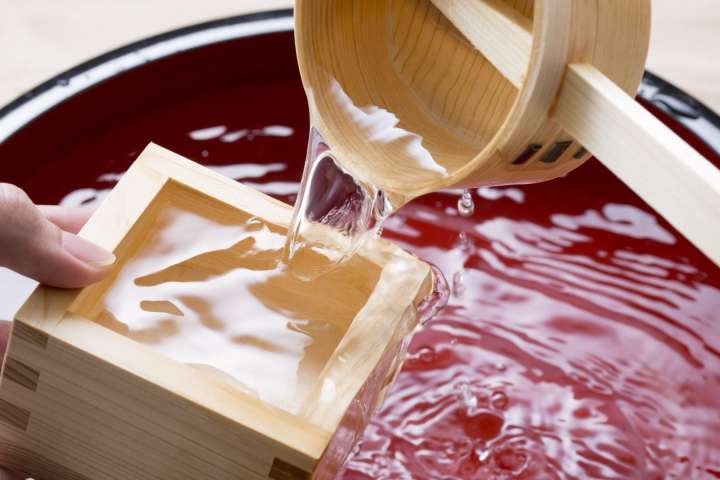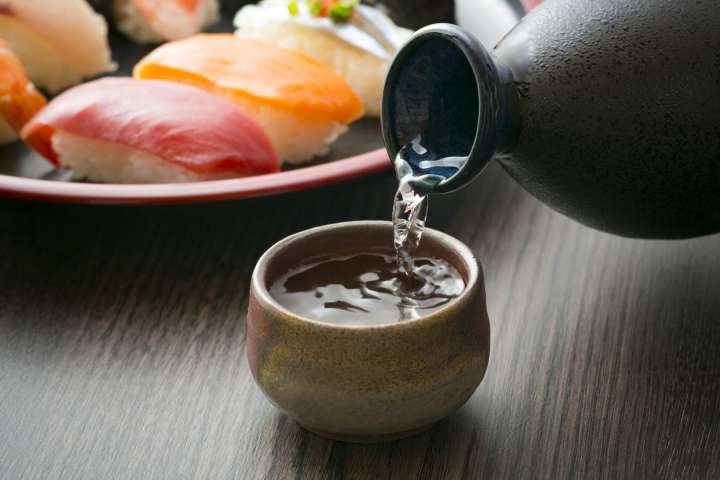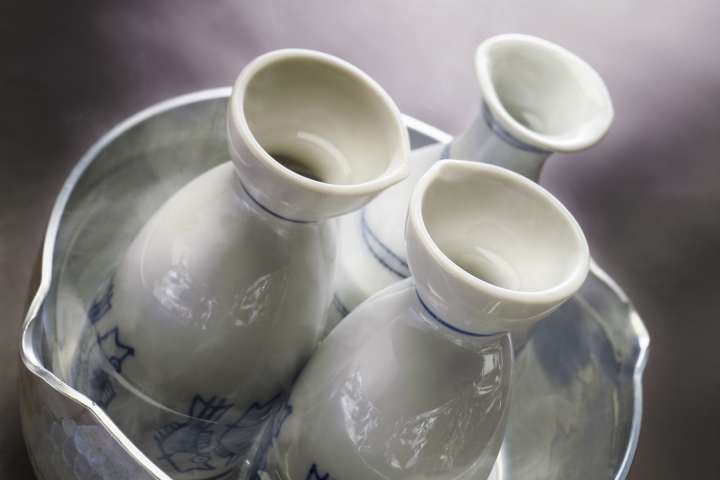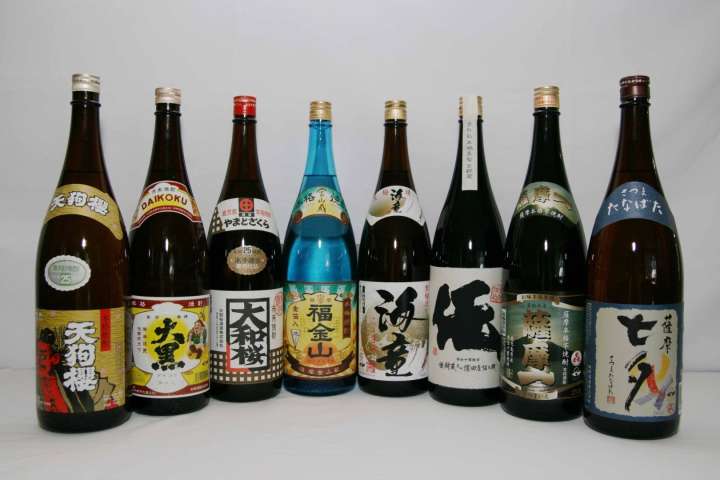
STORY Nihonshu, Shochu, and Awamori – How do These Differ? A deeper dive into Japan’s Sake! by JNTO on 28 October 2019
If one has to name one of the universal languages, chances are it would be – alcohol. And rightly so, for alcohol is so widely consumed around the world that there are no barriers that drinks cannot overcome.

It goes without saying that people from different countries have their own unique drinking culture. Some might choose to nurse a few pints of beer while watching a soccer(football) match in a pub, some might gather like-minded acquaintances for a wine-tasting session, or still others might visit a snazzy bar to catch up with friends.
Japan is no exception. Past sundown, one can often see Izakaya (Japanese pubs) filled with people enjoying alcohol over dinner with their colleagues. Workers might also buy a few cans of beer to enjoy at home while winding down after a long day at work.
Kanpai – Alcohol in Japan’s society and culture

But that is just a tip of an iceberg. Sake (literally alcohol in Japanese language), is a deeply-rooted element in the society of Japan. For example, drinking parties are common among university students or employees to let loose. When everyone gets a drink at the beginning of the party, all say “Kanpai!” (Cheers in Japanese) and clink their glasses together. Please remember that younger members usually angle their glasses lower than that of the seniors as a sign of respect.
Alcohol is also essential at life events. These include one’s coming-of-age, weddings, funerals, paying respects to one’s ancestors, and even at year end and New Year celebrations.

Here, alcohol is intertwined with culture and tradition, and has become symbolic. For example, Toso, a kind of Sake served during New Year celebrations, is believed to wash away woes in the previous year; there is also a Sake-sharing session at weddings between the families of the bride and groom, which symbolises the bond between them.

The different kinds of ‘Sake’ in Japan - knowing them all is an art in itself!
Just like how there are beer, gin, vodka and more, there are many different types of Japanese alcoholic beverages. These beverages differ based on the brewing processes and their ingredients. The flavour of Sake made in the west and south of Japan tends to be sweeter, while towards the north, it tends to be slightly drier.
It would take long before you can cover the full range of alcohols in Japan, but it would no doubt be a boon if you were able to appreciate the unique local tastes in different regions. Here are three types of Japanese alcoholic beverages that may give you some insight into Japan’s drinking culture.
Nihonshu ”Sake“, the classic of Japanese alcohol

Many are familiar with the Japanese term ‘Sake’, but this is in fact an all-encompassing term for alcoholic drinks in the Japanese language; ‘Sake’ can also refer to many types of alcoholic drinks, including a specific type otherwise known as Nihonshu. The primary ingredients of Nihonshu are rice, water, and rice malt which is a type of enzyme-secreting fungus. Its brewing process is similar to that of beer.

Nihonshu is produced all over Japan, but there are certain prefectures that stand out in terms of their production amount - Hyogo, Kyoto, and Niigata, according to figures from the country’s National Tax Agency. In fact, these three prefectures produce over half of the Nihonshu on the entire market. If you are around, grab the chance to drop by a brewery and try out the great tastes.
Of course, there are brands from other prefectures which enjoy a global popularity; Dassai from Yamaguchi Prefecture, is extremely fragrant and prides itself on using rice that has been polished until less than 30% of each rice grain remains; Juyondai from Yamagata Prefecture, combines a fruity and sweet aroma with a dash of umami; there is also Kubota from Niigata Prefecture, which tends towards a dry and lighter palate.
With so many different varieties of Nihonshu, there are just as many different ways of serving them. Compared to other types of Japanese alcoholic beverages, Nihonshu can be served at a wider range of temperatures, between 5 to 60 degrees Celsius, which makes for some interesting drinking experiences.
What is more, instead of just asking for it to be ‘cold’ or ‘hot’, there are actually special terms used to specify your preferred temperature: if you ask for ‘yukihie’ (literally chill-in-snow), that comes to around 5 degrees Celsius; if you ask for ‘hitohadakan’ (body temperature), that is around 35 degrees Celsius; there is also ‘atsukan’ (heated to about 50℃) and even ‘tobikirikan’ (piping hot).

Shochu, from the west of Japan

Next is Shochu. Contrasting with Nihonshu, Shochu is created using different base ingredients such as rice, barley, sweet potatoes, buckwheat, etc. As it is made using the distillation method, Shochu contains a higher alcohol content than Sake.
Shochu production centers on the Kyushu area, to the west of Japan. The art of distilling was passed down through foreign trade channels and first arrived in Japan through its western region – it then took root firmly in Kyushu for its warm weather conditions, a favourable setting for the distillation process.
One of Shochu’s biggest draws is that it brings out the original flavour of its primary ingredients, thus a natural and ‘earthy’ taste. Whether it be the distinctive sweet smell of sweet potatoes, or the soft and slightly rich taste of buckwheat, Shochu’s selling point is that there is bound to be a flavour for everyone.
Awamori, the Sake of Okinawa

Finally, we have Awamori. It is distilled, like Shochu, but where Shochu can be made using ingredients such as sweet potatoes and wheat, Awamori is made from rice – not just any rice, but generally long-grained Thai rice.

Why Thai rice? That is because Okinawa was used to be a trading hub between Southeast Asia, Japan, and China; Thai rice being one of the agricultural commodities traded. Awamori is but one of the many products of Okinawa’s history. Another Awamori’s ingredient includes Okinawa-produced koji rice malt, making it a drink that is unique and indigenous to Okinawa.
You can of course drink Awamori as it is, or with water or soda. For those who are slightly more adventurous, try mixing it with milk, or even coffee. Both are popular ways to enjoy the alcohol in Okinawa, and the locals definitely know the best ways to bring out its flavour.

Find your own favourite flavour
So the next time you go for a drink, consider giving Japan’s Sake a try. Even if you are new to alcohol beverages, or have not yet found a flavour that strikes your fancy, you never know – there is bound to be a drink out there that can catch your attention. Enjoy your drink with some snacks, and you will find the perfect way to unwind. Kanpai!
























































